For…as long as I can remember, I have used the term “deck height” to describe the distance between the strings of a guitar and the face of the guitar. No idea where I picked it up, but I’ve used it in face to face conversations, on chat boards, in forums, here, and nobody has ever said to me “what do you mean by that?”
But as I prepared to write about this topic here, I began by doing a little Google-fu and apparently the term “deck height” isn’t a thing? Not only can I not find this term in use as I use it anywhere, I can’t find another term commonly or even uncommonly used to describe the distance between the strings and the face of the guitar. Which is weird, right?
I mean, that distance can have a pretty significant impact on HOW you play the guitar, right? Or at least how “comfortable” a guitar is for your style of play—if you’re someone like me who tends to rest or plant your pinky when playing, that distance matters. Yet there’s no term for it?
That distance—that “comfort factor”—might just be why many Rickenbackers have a two level pickguard—but I’m getting ahead of myself here. We’ll get back to that later.
All that said, for our purposes I am hereby declaring that the term “deck height” is a thing and it refers to the distance between the strings and the face of the guitar. So why bring it up in the first place? Because different Rickenbackers have different deck heights, and this different geometry causes differences in how the guitars are assembled, and the whole point of this site is to educate folks on ALL the stupid little details of the guitars we love. So there!
So in general, on 6 and 12 string guitars, most Rickenbackers come with one of two deck heights: about 3/4” (19.05mm) or about 3/8” (9.525mm) at the E strings. Now obviously there’s variation here based on bridge height, neck relief, string gauge, etcetera, but those are the two basic heights we’re working with. There are exceptions, and we’ll get to them later.
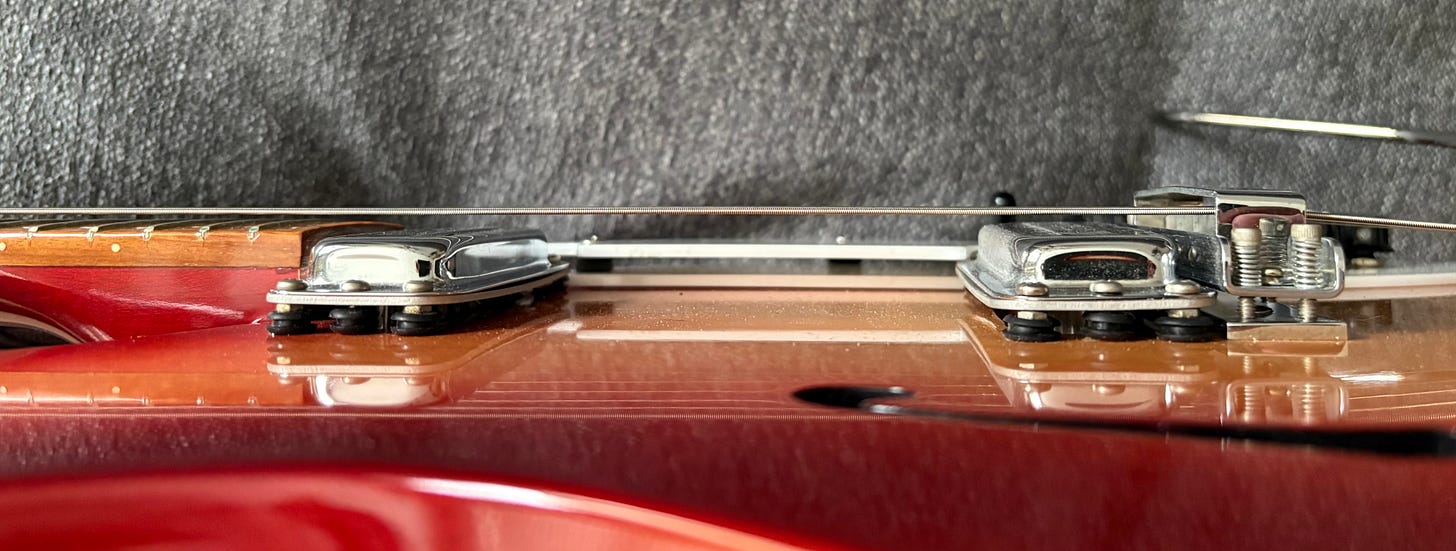
Almost all semi-hollowbodied guitars come with the 3/4” deck height. On guitars with this deck height, the pickups are top-mounted on the guitar, with routs only required for the magnets/magnetic pole pieces at the bottom of the pickup. Not only are the pickups top-mounted, they also require rubber grommets or a foam pad to further raise their electromagnetic field into the appropriate distance from the strings.
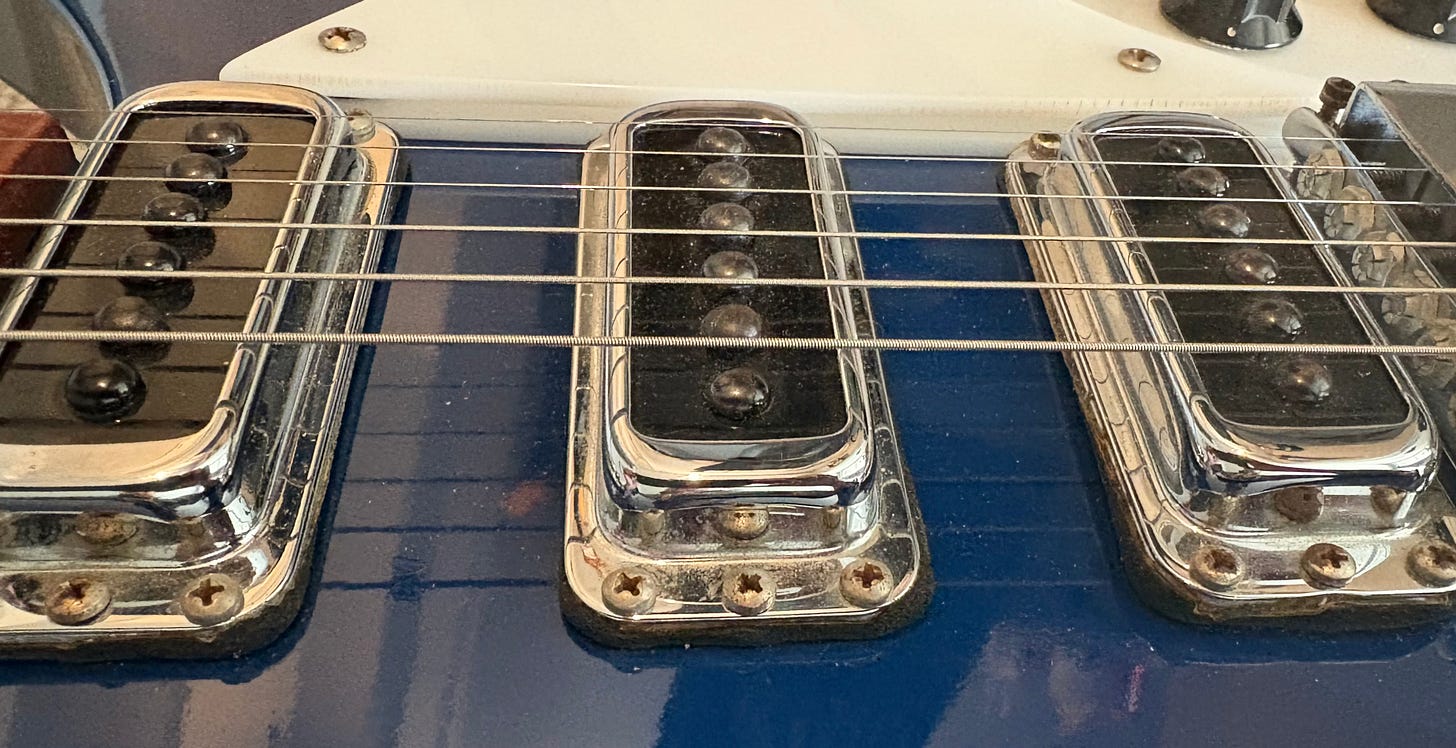
The standard Rickenbacker 6-saddle bridge is also mounted directly to the top. And as you can see from the profile pic above, there’s plenty of room to do so. Not so much on the 3/8” deck height guitars.
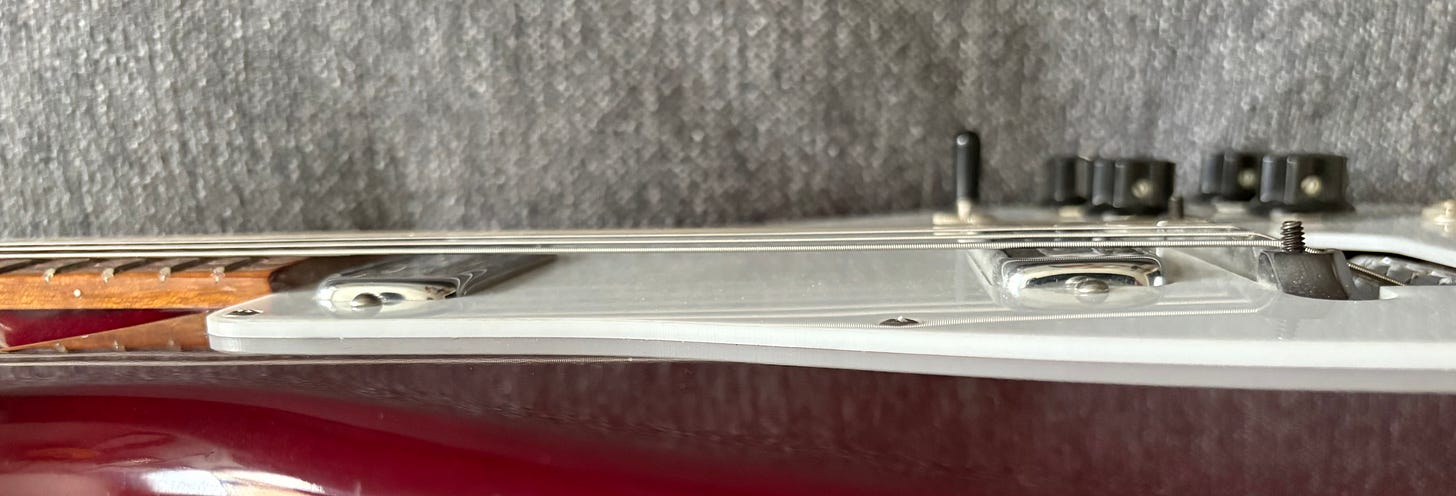
Almost all solidbodied guitars come with the 3/8” deck height. On these guitars, the body has to be routed to recess the pickups. The pickups can then either be mounted directly to the underside of pickguard, like on “vintage” guitars like the 420/450/460 and 900/950/1000, or screwed directly to the body inside their recess like on “modern” guitars like the 650 series or 480XC.
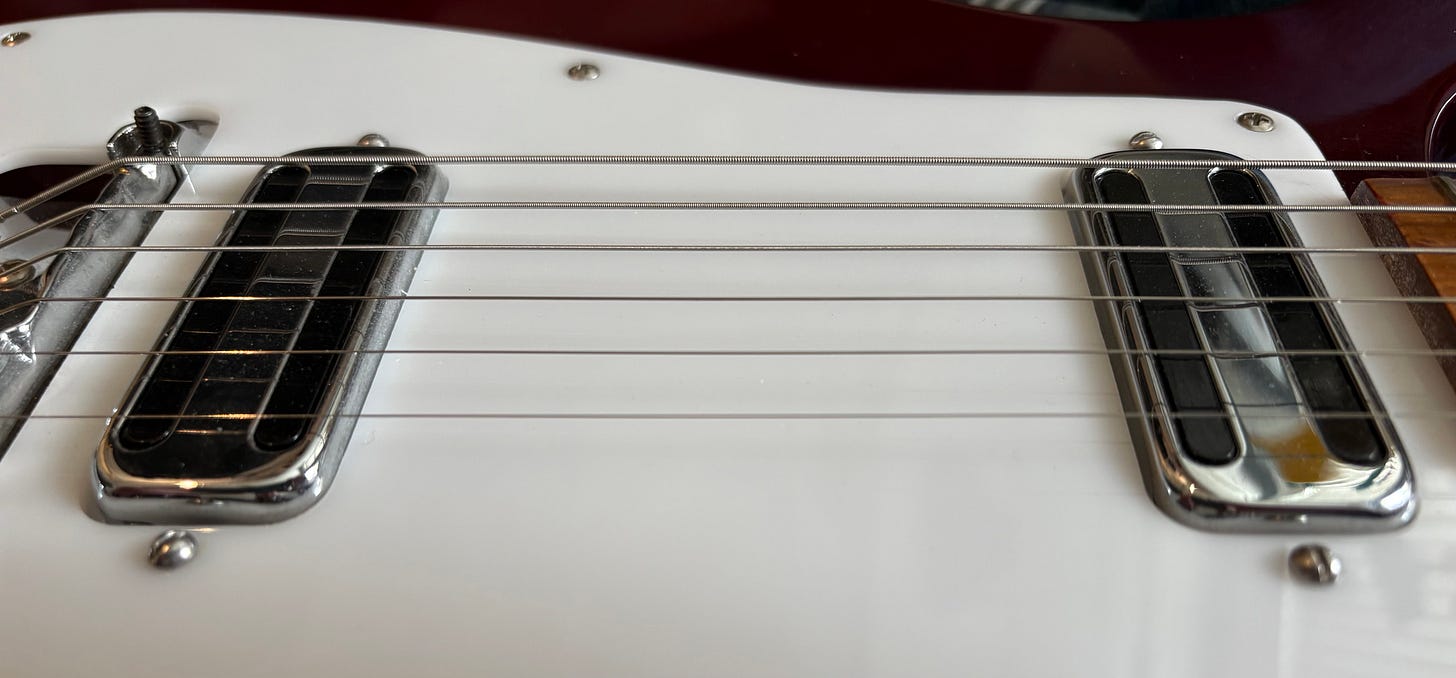
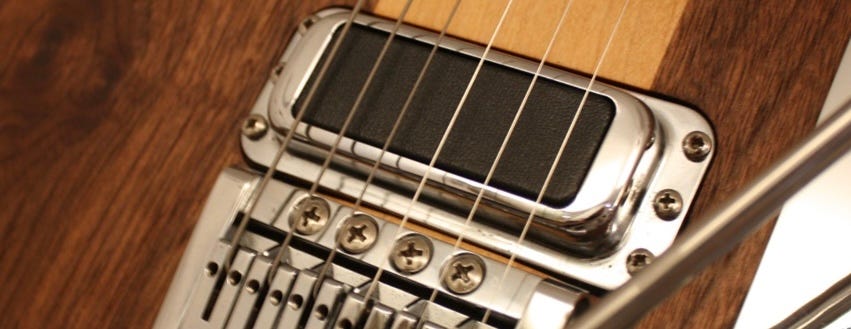
The standard Rickenbacker 6-saddle bridge sits too high for the deck height on these guitars, so in cases where it (or a floating compensated bridge) is used a cavity is routed to allow for it to be recessed as well. Note in the following photo of a 450 with a clear pickguard how both the body is routed for the bridge and how the pickup is mounted to the pickguard.
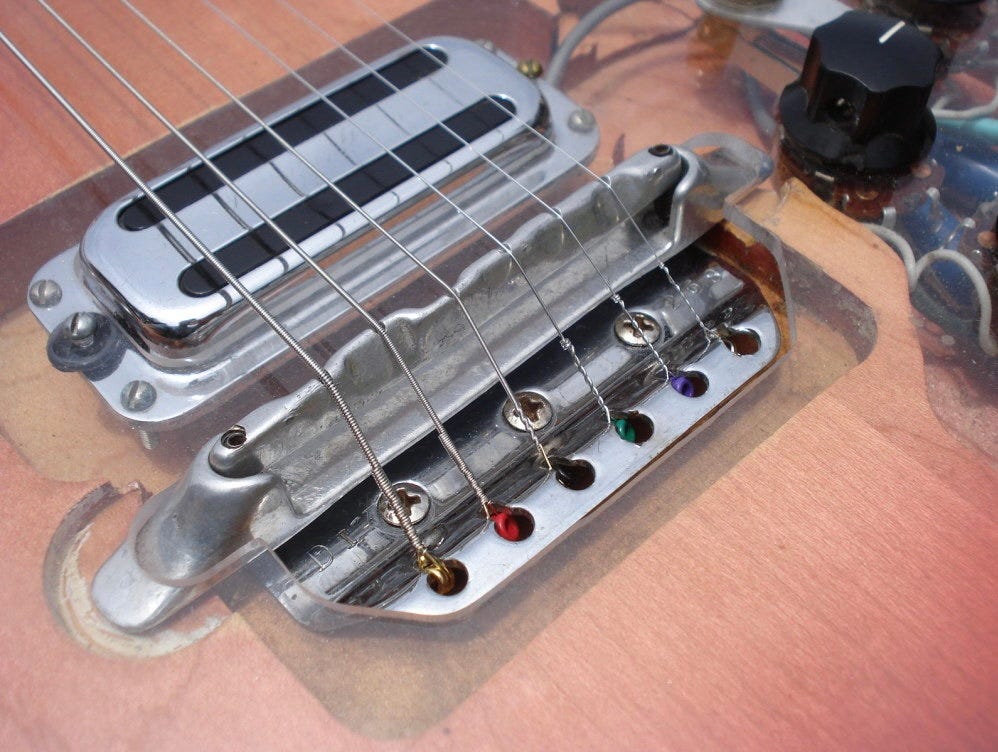
On more modern guitars, lower profile bridges are attached directly to the top of guitars with a 3/8” deck.
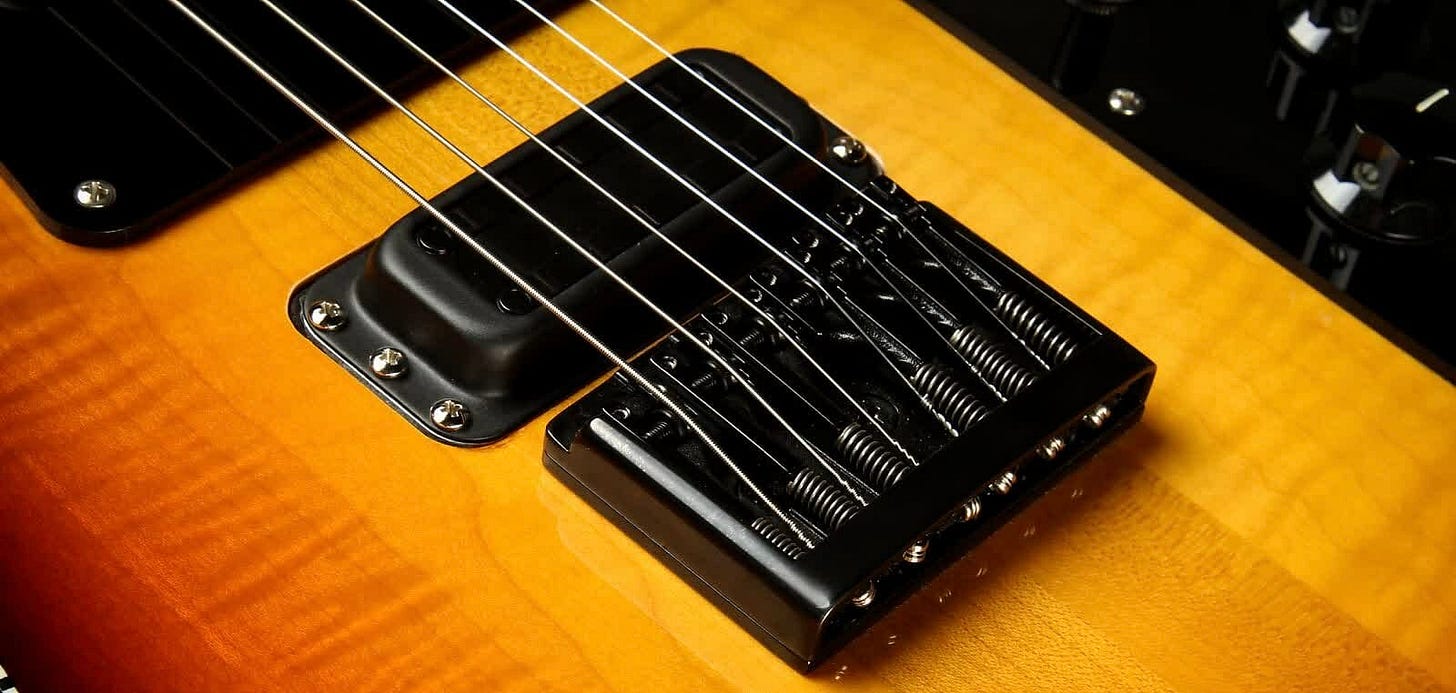
So the rules say semi-hollow guitars have a 3/4” deck and solidbodies have a 3/8” deck. So what are the exceptions?
Well, there’s the 610, 620, and 660. Those are solidbody guitars with a 3/4” deck. So is the 430, and the Bantar. And then there’s the 380 Laguna—the only semi-hollow I can think of with a 3/8” deck. It looks kinda weird once you notice it!
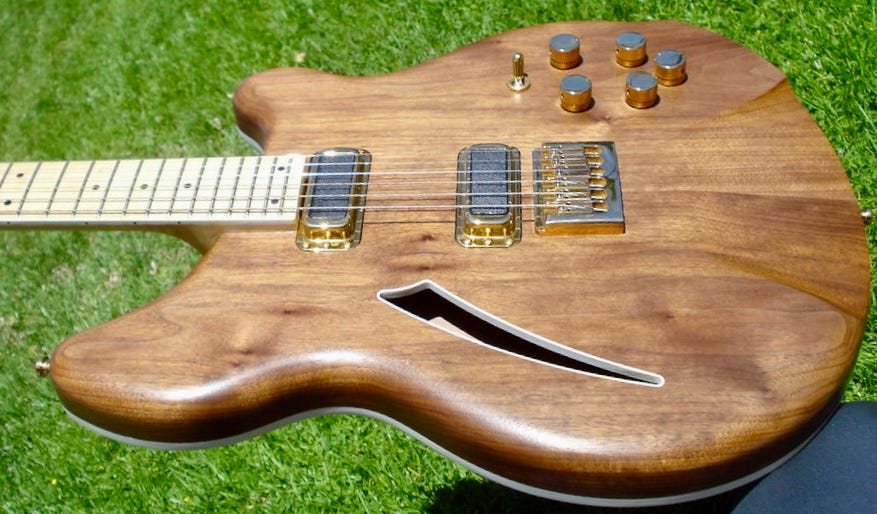
But there’s one really really weird exception to all rules: the original 480/483.

The 480 starts off at about 3/8” at the neck, and winds up at about 3/4” at the bridge. The neck, you see, is set at an angle due to their desire for the guitar to look like a 4001 bass while still using off the shelf parts. The top mounted bridge pickup just barely fits under the strings and the pickup mounted neck pickup is too far away…it’s a mess.
It looks even weirder when you apply that angled neck to the 4080 doubleneck where the bass neck ISN’T angled.
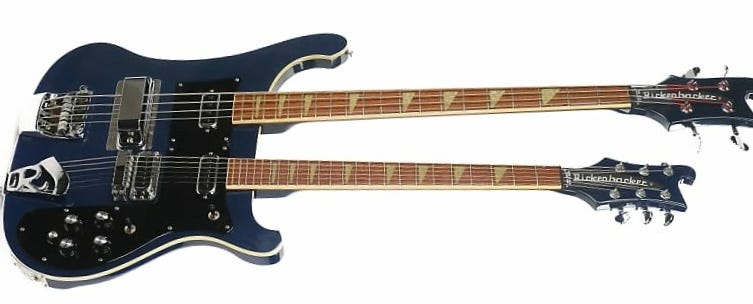
And speaking of basses, we should talk about those as well. But that’s easy: semi-hollowbodies like the 4005 and 4005XC have about a 3/4” deck height and solidbodies have about a 1/2” deck height.
And before we wrap up let’s go back to something we mentioned earlier on: the upper pickguard on semi-hollowbody guitars. You ever notice how the Capris didn’t have one? You ever wonder why they got one later? I mean, this is pure conjecture, but you ever play a Rickenbacker without an upper guard? I have…and immediately went out and bought one because it was so uncomfortable to play. I’m not saying that’s why Rickenbacker put that upper guard on…but it sure would make sense if it was.




Random here, but one thing that has me befuddled and not happy is im just now noticing on my 2018 325C64 is the high E coming through on the slightest angle from the Ac'cent over the roller bridge, that it will not ease off against the edge of that roller instead of centered on it. Giving it a "pinnng" instead of a "pinnnnnnnnnnnnnng" if I pluck it.
"Action" I've always heard. Low action/high action.